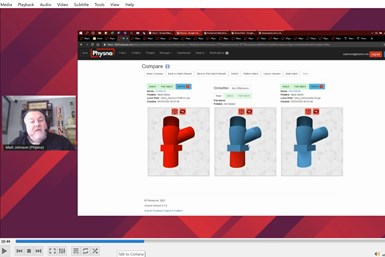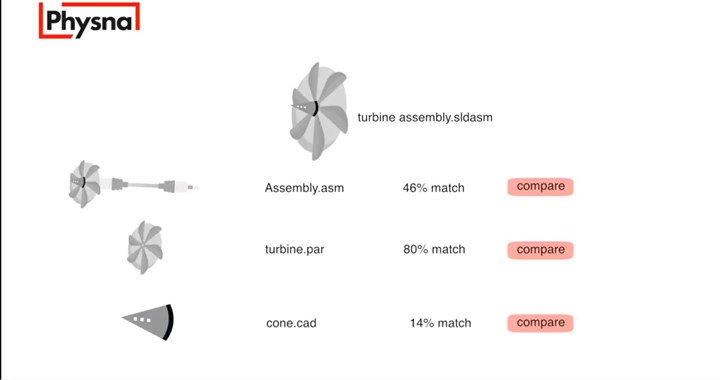
Have you ever wondered: “Is there a search engine for 3D models?” It seems there is. And, it can be valuable to machine shops and manufacturers as well as product designers.
Cincinnati, Ohio’s Physna aims to bridge the gap between physical objects and digital code by analyzing CAD models and other 3D models to create a codified representation of a model — the “physical DNA” of that model. This digitized model enables Physna to show the detailed similarities and differences between models — even incomplete models or those with different file formats — as well as see all components in complex assemblies including parts contained in other parts.
Featured Content
In other words, it uses artificial intelligence to break down the structure of 3D models, analyzes them and determines how models are related to each other. The goal is to save engineering and product design teams many hours per person per year, reduce procurement costs, and enable anyone to immediately recognize parts and how they can be used.
But, machining operations can also benefit through faster quoting and tooling creation.

Physna uses artificial intelligence to break down the structure of 3D models, analyzes them and determines how models are related to each other.
Because it is challenging to capture and describe all the aspects of this technology in an article, I had the following discussion with Matt Johnson, Physna application engineer, who not only explained its value but also provided a demonstration showing ways designers and manufacturers might use it:
RELATED CONTENT
-
Why Using Pirated Software is Riskier Than Ever
Machine shops and manufacturers that use pirated software risk losing much more – both directly and indirectly.
-
Optimizing B Axis on Gang Tool-Based Swiss Machines
This technological innovation has been increasing in popularity as well as multitasking sophistication.
-
How to Get More Efficient Production from Swiss-Type and Multitasking Machines
SolidCAM for multi-axis Swiss type and multitasking machines provides a very efficient CAM programming process, generating optimal and safe Mill-Turn programs, with dramatically improved milling tool life.






